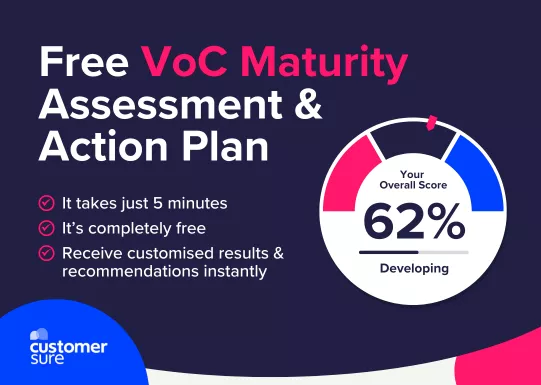

One of the great things about a customer feedback programme is that it gives you the opportunity to find and fix problems. Customers will tell you what is not working for them and what you could do to make their experience better. Even if they don’t explicitly say what you could do to improve, their scores and comments will provide valuable insights into what needs attention.
A big driver for obtaining feedback and doing satisfaction surveys is to solve customer problems, reduce the risk of losing customers and put things in place to have happier customers who are more loyal and more likely to recommend you.
All very sound reasons which undoubtedly have significant business benefits.
But what about those customers who give you positive feedback? Those who score you highly and say nice things about you and your team in the comments. It can be tempting to look at these, get a feeling of warmth and pride that these customers rate you, then move on, to look for those customers who are not so happy and require help and attention.
Of course you need to look at dissatisfied customers and do what you can to help them. But we think not looking at those happy customers in more detail, not learning from them, and not responding to them is a mistake.
Happy customer feedback is extremely valuable and you should take time to understand it and use it. It will tell you what customers like about you, your products & services, your team, your culture and your brand. If you ever do a SWOT analysis and want to know what your strengths are, you can start by looking at your positive customer feedback.
These glowing comments say so much about how the way you operate makes your customer feel. Maybe you make things so easy, maybe you’re ridiculously reliable and never let them down, maybe your product or service is so good they couldn’t live without it, maybe your account managers are so good they set the benchmark for all interactions with other companies, maybe it’s how you deal with things when they go wrong.
Every business and sector is different, and the emotional connection is different between say a care home who looks after an elderly relative, and an insurance company who insure your car, but every business will have unquestionable facts stating why some customers love them.
Take time to look at your positive customer comments. They won’t just tell you what customers like about you, they’ll also tell you what your customers value and what is important to them. For example, when a customer says they like the speed of response to technical queries, they mean that getting the answers to technical questions quickly is really important to them, and you doing so is a key differentiator. Failure to do so would have a detrimental impact on them.
Other customers (and potential customers) will have the same requirement, so it’s important to ensure you remain consistently strong in this area. And because you know this is important to customers and they value it, could these USPs inform your marketing and messaging? The positive feedback themes should certainly feed into your marketing and business development activity.
The positive feedback should most certainly be shared with colleagues. Not only as a way to recognise and praise good performances and motivate colleagues, but also to say that customers really value this stuff, we are good at it, so let’s ensure we remain good or even improve further. The positive feedback vindicates your efforts in these areas, and customers love it, so let’s not let standards drop.
Positive feedback should also be shared upwards too, and can be used to leverage a position or reinforce why investment and resources in X, Y or Z is so important. It can also ensure that certain activities are not taken for granted, and really do matter.
What is important but sadly not always happens, is closing the loop and responding to customers when you can. Perhaps customers who have provided high scores and positive comments are overlooked and only customers who are less satisfied are responded to.
We think this is a mistake and you should make the effort to respond to these customers. It may not have an immediate tangible effect, but it will contribute to marginal gains and help lock in that customer a little more. Thanking them for their feedback, acknowledging their comments and reassuring them you will continue to strive to deliver in the areas which are important to them, will help ensure these customers stay with you in the longer term (and may also recommend you more to others).
So, next time you look at your customer feedback, don’t just focus on the lower scores and critical comments. Look at the positive feedback too. Learn from it and use it, as ultimately everyone will benefit.
At CustomerSure, we’re fanatical about helping our customers drive tangible business benefits through their customer feedback process. To help, we produce a wide range of guides and resources to assist at every stage of the journey.
For anything else, we’re just a contact form away!

Gain a clear view of how mature your VoC programme is, and receive tailored recommendations to take it to the next level.
Take the assessment »